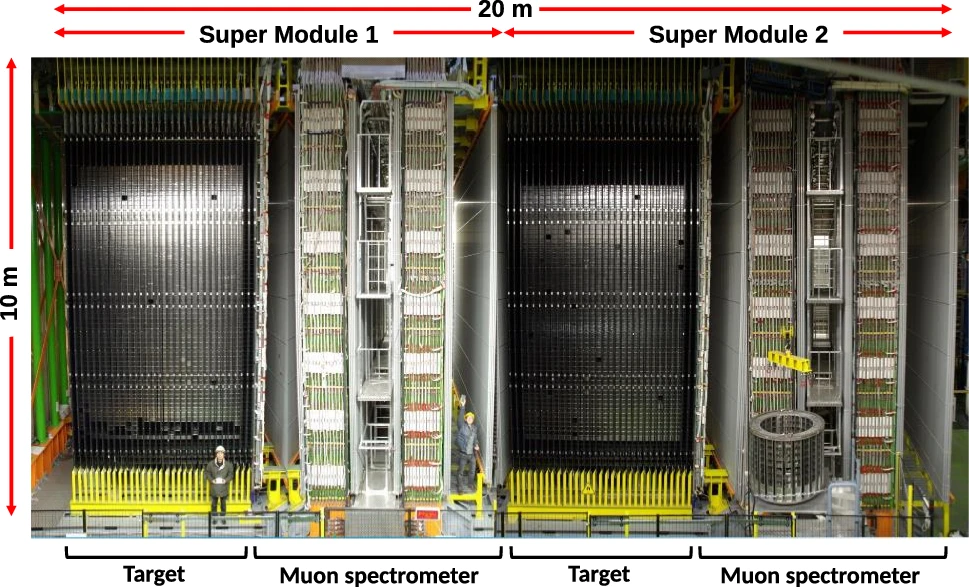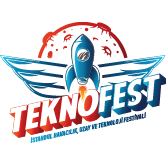The research article “First observation of a tau neutrino charged current interaction with charm production in the OPERA experiment: OPERA Collaboration”, co-authored by METU member Prof. Ali Murat Güler, has been published in European Physical Journal C.
 An event topology with two secondary vertices compatible with the decay of short-lived particles was found in the analysis of neutrino interactions in the OPERA target. The observed topology is compatible with tau neutrino charged current (CC) interactions with charm production and neutrino neutral current (NC) interactions with cc¯ pair production. However, other processes can mimic this topology. A dedicated analysis was implemented to identify the underlying process. A Monte Carlo simulation was developed and complementary procedures were introduced in the kinematic reconstruction. A multivariate analysis technique was used to achieve an optimal separation of signal from background. Most likely, this event is a ντ CC interaction with charm production, the tau and charm particle decaying into 1 prong and 2 prongs, respectively. The significance of this observation is evaluated.
An event topology with two secondary vertices compatible with the decay of short-lived particles was found in the analysis of neutrino interactions in the OPERA target. The observed topology is compatible with tau neutrino charged current (CC) interactions with charm production and neutrino neutral current (NC) interactions with cc¯ pair production. However, other processes can mimic this topology. A dedicated analysis was implemented to identify the underlying process. A Monte Carlo simulation was developed and complementary procedures were introduced in the kinematic reconstruction. A multivariate analysis technique was used to achieve an optimal separation of signal from background. Most likely, this event is a ντ CC interaction with charm production, the tau and charm particle decaying into 1 prong and 2 prongs, respectively. The significance of this observation is evaluated.
Agafonova, N., Aleksandrov, A., Anokhina, A., Aoki, S., Ariga, A., Ariga, T., . . . Yoon, C. S. (2020). First observation of a tau neutrino charged current interaction with charm production in the OPERA experiment: OPERA collaboration. European Physical Journal C, 80(8) doi:10.1140/epjc/s10052-020-8160-y
Article access: https://link.springer.com/article/10.1140%2Fepjc%2Fs10052-020-8160-y
Prof. Ali Murat Güler |
Web of Science/Publons Researcher ID: ABB-3382-2020 |
| amg@metu.edu.tr | Scopus Author ID: 26435242300 |
| About the author | ORCID: 0000-0001-5692-2694 |
Other authors:
Agafonova, N., Aleksandrov, A., Anokhina, A., Aoki, S., Ariga, A., Ariga, T., Bertolin, A., Bozza, C., Brugnera, R., Buonaura, A., Buontempo, S., Chernyavskiy, M., Chukanov, A., Consiglio, L., D’Ambrosio, N., De Lellis, G.,n, De Serio, M., del Amo Sanchez, P., Di Crescenzo, A., Di Ferdinando, D., Di Marco, N., Dmitrievski, S., Dracos, M., Duchesneau, D., Dusini, S., Dzhatdoev, T., Ebert, J., Ereditato, A., Fini, R.A., Fornari, F., Fukuda, T., Galati, G., Garfagnini, A., Gentile, V., Goldberg, J., Gorbunov, S., Gornushkin, Y., Grella, G., Gustavino, C., Hagner, C., Hara, T., Hayakawa, T., Hollnagel, A., Ishiguro, K., Iuliano, A., Jakovcic, K., Jollet, C., Kamiscioglu, C. (METU), Kamiscioglu, M. (METU), Kim, S.H., Kitagawa, N., Klicek, B., Kodama, K., Komatsu, M., Kose, U., Kreslo, I., Laudisio, F., Lauria, A., Longhin, A., Loverre, P., Malgin, A., Malenica, M., Mandrioli, G., Matsuo, T., Matveev, V., Mauri, N., Medinaceli, E., Meregaglia, A., Mikado, S., Miyanishi, M., Mizutani, F., Monacelli, P., Montesi, M.C., Morishima, K., Muciaccia, M.T., Naganawa, N., Naka, T., Nakamura, M., Nakano, T., Niwa, K., Okateva, N., Ogawa, S., Ozaki, K., Paoloni, A., Paparella, L., Park, B.D., Pasqualini, L., Pastore, A., Patrizii, L., Pessard, H., Podgrudkov, D., Polukhina, N., Pozzato, M., Pupilli, F., Roda, M., Roganova, T., Rokujo, H., Rosa, G., Ryazhskaya, O., Sato, O., Schembri, A., Shakirianova, I., Shchedrina, T., Shibuya, H., Shibayama, E., Shiraishi, T., Simone, S., Sirignano, C., Sirri, G., Sotnikov, A., Spinetti, M., Stanco, L., Starkov, N., Stellacci, S.M., Stipcevic, M., Strolin, P., Takahashi, S., Tenti, M., Terranova, F., Tioukov, V., Vasina, S., Vilain, P., Voevodina, E., Votano, L., Vuilleumier, J.L., Wilquet, G., & Yoon, C.S.
Acknowledgments:
We acknowledge CERN for the successful operation of the CNGS facility and INFN for the continuous support given to the experiment through its LNGS laboratory. We acknowledge funding from our national agencies: Fonds de la Recherche Scientifique-FNRS and Institut Inter Universitaire des Sciences Nucleaires for Belgium; MoSES for Croatia; CNRS and IN2P3 for France; BMBF for Germany; INFN for Italy; JSPS, MEXT, the QFPU-Global COE program of Nagoya University, and Promotion and Mutual Aid Corporation for Private Schools of Japan for Japan; SNF, the University of Bern and ETH Zurich for Switzerland; the Russian Foundation for Basic Research (Grant No. 12-02-12142 ofim), the Programs of the Presidium of the Russian Academy of Sciences (Neutrino Physics and Experimental and Theoretical Researches of Fundamental Interactions), and the Ministry of Education and Science of the Russian Federation for Russia, the National Research Foundation of Korea (NRF) Grant (No. 2018R1A2B2007757) for Korea; and TUBITAK, the Scientific and Technological Research Council of Turkey for Turkey. We thank the IN2P3 Computing Centre (CC-IN2P3) for providing computing resources.










